On September 16, China formally submitted a request to accede to the Comprehensive and Progressive Trans-Pacific Partnership (CPTPP) trade agreement. This was not surprising news, but it was still big news. The CPTPP is the survivor to the American exit from the original Trans-Pacific Partnership (TPP) at the behest of former U.S. President Donald Trump. The reconfigured trade grouping retained the ambitious targets for tariff elimination and high standards on trade and investment liberalization. From its inception, the TPP project has anticipated welcoming new members both to increase its economic heft and to disseminate quality rules for economic integration. Acceptance of the CPTPP’s extant disciplines is required of all prospective members.
China has been sending signals of interest in joining the trade agreement for a while, and at the last Asia-Pacific Economic Cooperation Summit meeting, Chinese President Xi Jinping announced that China will “favorably consider joining” CPTPP. The formal accession bid is a masterful stroke for Chinese diplomacy, even if the intended outcome of membership is far from assured.
Entry into CPTPP would consolidate China’s economic integration drive, building from its joining the Regional Comprehensive Economic Partnership (RCEP) trade agreement; its state-sponsored Belt and Road Initiative; and the Chinese-led Asian Infrastructure Investment Bank. The CPTPP would be a particularly valuable feather in China’s cap as champion of economic globalization. It would reverse the persistent narrative of economic decoupling, as China would appear more centrally integrated to the world economy with an ambitious trade agreement under its belt, whilst the United States looks from the outside in, marginalized from the CPTPP of its own volition.
Some observers feel good about the prospects of China acceding to CPTPP. They argue that China is closer to CPTPP standards than usually acknowledged, that the flexibilities built into the text of the agreement will enable China to join even in areas where domestic reform is hard, and that the existing CPTPP members have a strong interest in deepening trade and investment relations with an economic giant like China.
Such optimism may be misplaced, however. There is a wide gap between core CPTPP standards and China’s extant commitments in other trade agreements. The CPTPP has chapters on labor and state-owned enterprises mandating freedom of association, eliminating all forms of forced labor, and establishing disciplines on the commercial activities of public enterprises; RCEP does not. Both the CPTPP and RCEP contain a chapter on e-commerce, but the commitments undertaken are very different. It is not just that the digital provisions of the CPTPP go further (for example, forbidding forced disclosure of source code), but that they are subject to dispute settlement amongst the parties and do not invoke self-judging national security exemptions.
In assessing China’s readiness to play by the CPTPP rulebook, the direction of travel matters. Under Xi, China has moved further away from the spirit of the CPTPP on labor rights protection, a level-playing field for private enterprises, and freedom of data flows. Instead, China’s repression of Uyghurs, the heavy subsidization of high-tech industry, and its tightened data localization requirements under the new Data Security Law have been a source of concern for its trading partners — including many CPTPP members. Scale ought to be considered. Vietnam, a CPTPP founding member with heavy state presence in the economy, received several exemptions for its state-owned enterprises (SOE). However, China’s mammoth size is bound to make many CPTPP members wary of extending similar flexibilities. In fact, countries like Japan have been working with others to tighten World Trade Organization (WTO) subsidy rules with China in mind. An easy waiver for multiple Chinese SOEs appears unlikely.
It bears noting that 2021 is not 2001. If China were prepared to adopt far-reaching economic reforms like it did to win entry into the WTO, CPTPP membership could be a catalyst for positive change for both China and its relations with trading partners. Absent such strategic orientation towards a greater opening of the economy, a successful Chinese CPTPP bid brokered through broad exemptions could instead result in a watering down of the agreement’s standards. It is unlikely that many CPTPP parties would be inclined to see the weakening of the rules they fought hard to salvage, especially considering that in RCEP they have already an alternative trade platform to reap the benefits of greater economic exchange with China (six countries are presently members of both agreements). Turning CPTPP into a slightly stricter version of RCEP would be economic and strategic malpractice.
Politics will also weigh heavily in the final outcome. The CPTPP accession must clear a very high bar: unanimous consent of all active members. Eight countries have ratified the CPTPP (three signatories have not yet) and it will be up to them to determine whether Chinese accession negotiations receive a green light. Amongst them, Canada, Australia, and Japan have experienced significant recent tensions in their relations with China, respectively due to China’s arbitrary detention of its nationals, spats over the origins of the COVID-19 pandemic, and Chinese intrusions into the waters of the Senkaku Islands administered by Japan. The politics of accession are not starting from a clean slate; they will be influenced by China’s ongoing economic coercion and the priority attached to economic security — with China in mind — by several CPTTP members.
The accession talks will also be influenced by Taiwan’s decision to follow on China’s heels and formally request entry into the CPTPP. The gap to close in meeting CPTPP standards is much narrower for Taiwan, and its semiconductor prowess makes an enticing case for membership in order to strengthen supply chains. But in this era of great power competition, the WTO accession model (with entry of China and Taiwan choreographed in sequence) will likely not hold. Geopolitics have descended full force into the CPTPP.
China’s confidence in seeking CPTPP membership, despite questions over its commitment to far-reaching reform and recent tensions with important members of the trade grouping, speaks volumes to American marginalization. In effect, it will be up to the middle and small powers in the CPTPP to uphold the trade and investment standards that the United States cares deeply about as they entertain the Chinese membership bid. This is where the Chinese diplomatic maneuver is most poignant: The U.S. has become a shadow to the center of action in regional economic integration.
In joining a mega trade agreement, heed must be paid to both the small print and the subtext. In other words, the nature of the trade and investment obligations and the climate of political and diplomatic relations loom large. Neither one points to a fast pass for China to enter the CPTPP. But this does not mean that China has erred in making this move.
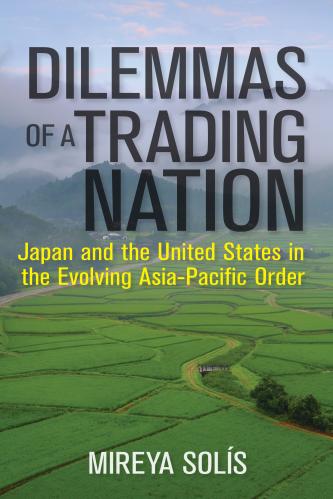

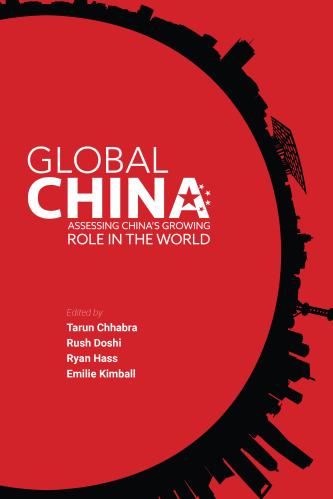
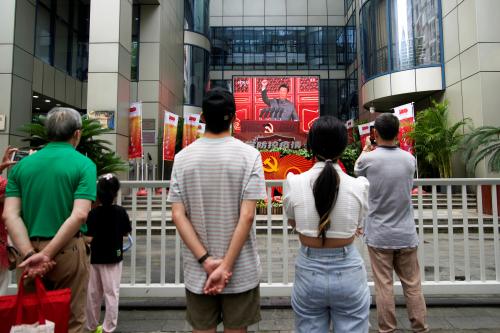
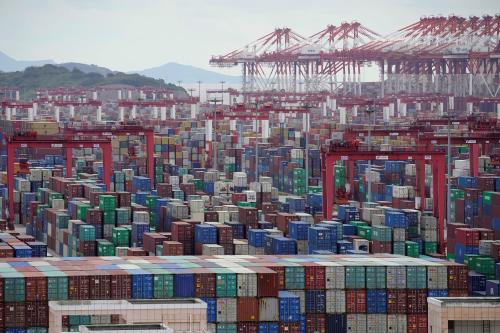
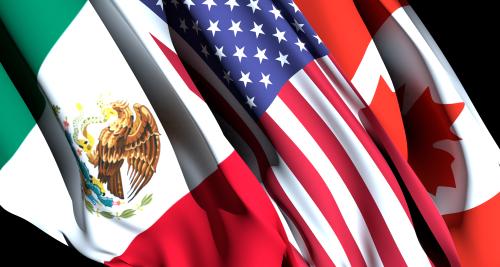




Commentary
China moves to join the CPTPP, but don’t expect a fast pass
September 23, 2021